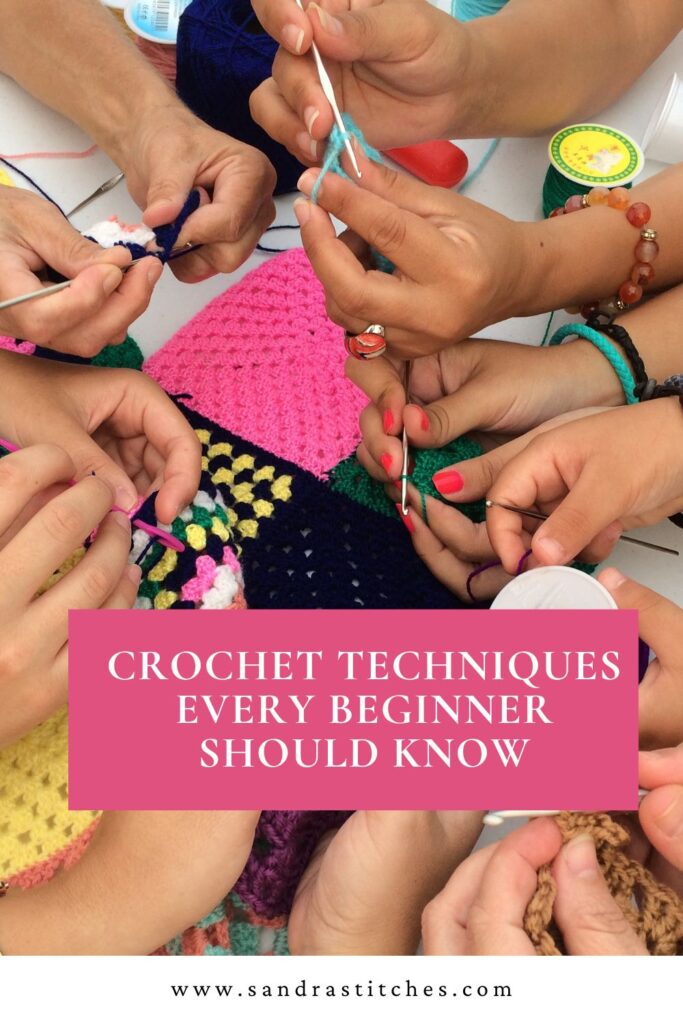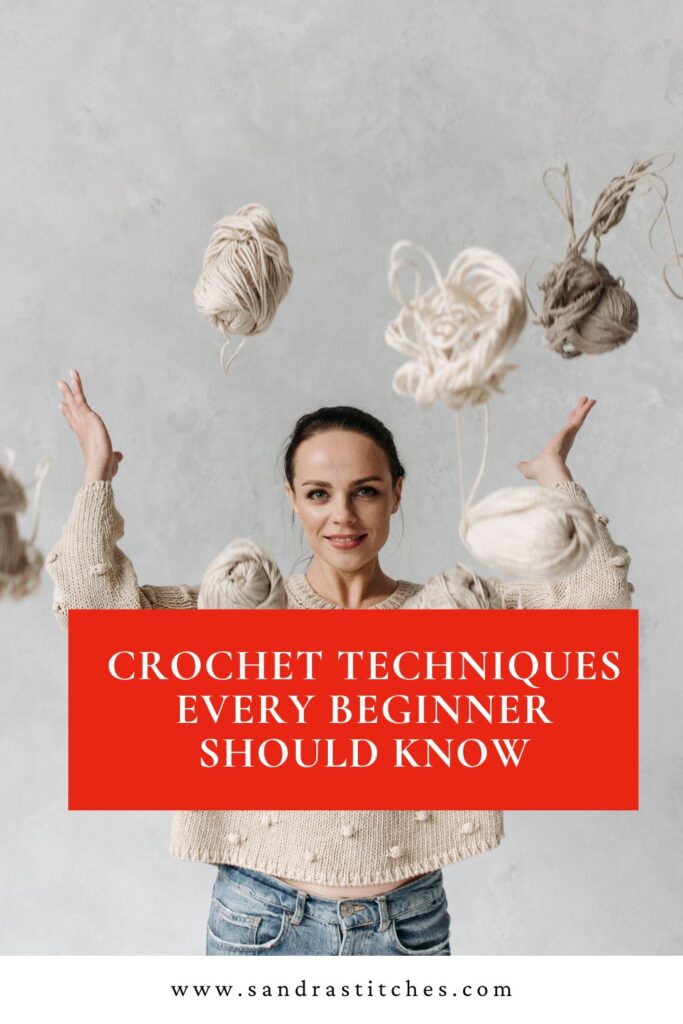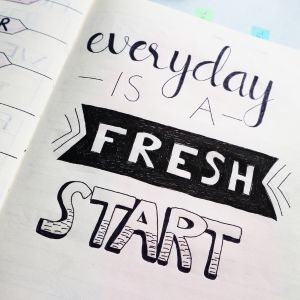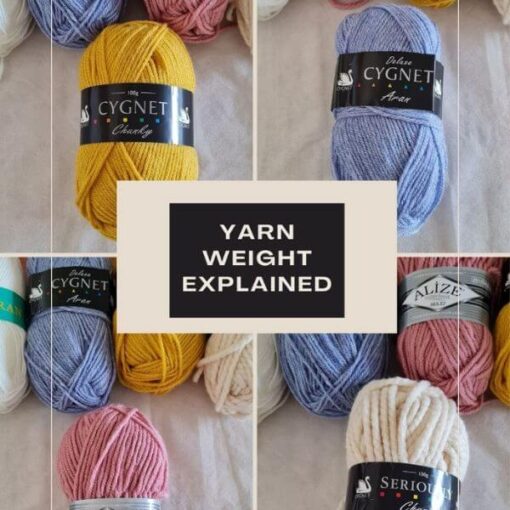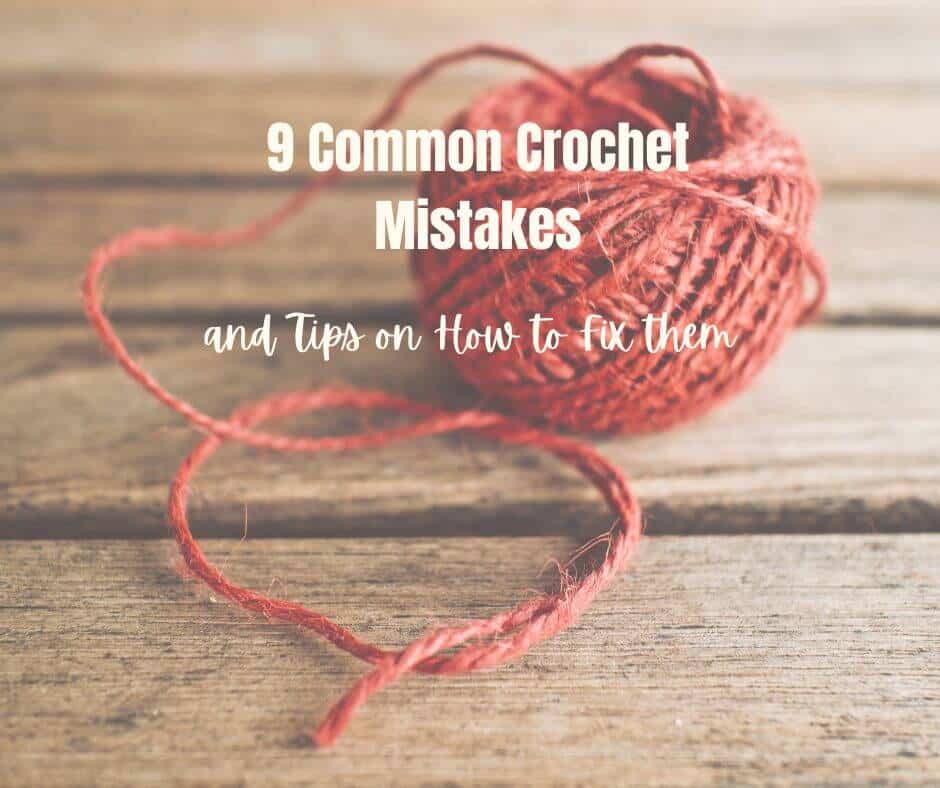Hey there, crochet fans! Whether you’re an absolute newcomer to the world of crochet or just need a little refresher, this post is for you. We’re going to cover some of the most essential crochet techniques that every beginner should have in their arsenal.
Once you’ve got these basics down pat, you’ll be well on your way to tackling more complex patterns and projects.
Get those hooks ready, grab some yarn, and let’s get crocheting!
The Basic Crochet Stitches
Alright, let’s start with the building blocks – the basic crochet stitches. These will likely make up the bulk of most patterns you’ll encounter as a beginner crocheter. Having them down solid is key and I made a video tutorial for them so you can watch too!
The Slip Stitch
This little stitch is kind of the underdog of the crochet world. The slip stitch doesn’t get a ton of glory, but it’s super important for things like joining rounds, sewing pieces together, or adding embellishments.
To do a slip stitch: Insert your hook into the next stitch, yarn over and pull a loop through that stitch and the loop on your hook. That’s all there is to it!
The Chain Stitch
Ah, the chain stitch – the very first stitch many beginners learn. It creates a foundation row or base chain to build your crochet fabric on.
Chaining is also handy for making stems, straps, edging and more.
To chain: Yarn over and pull up a loop (this initial loop is considered your first chain). Then, yarn over again and pull that new loop through the loop already on your hook to form a new chain. Keep doing this over and over until you have the number of chains needed.
The Single Crochet
Next up, we have the single crochet! This is probably the stitch you’ll use most often, especially for beginners. It creates a nice, tight, textured fabric that’s great for things like washcloths, potholders, garments, you name it.
Here’s how to single crochet: Insert your hook into the next stitch, yarn over and pull up a loop (you’ll now have 2 loops on your hook), yarn over again and pull that yarn tail through both loops on the hook. One single crochet made!
The Double Crochet
The double crochet is a taller stitch that works up quickly and has a more open, drapey look than single crochet. It’s awesome for blankets, shawls, scarves – anything you want a little drape for.
To double crochet: Yarn over, insert your hook into the next stitch, yarn over again and pull up a loop (you’ll now have 3 loops on your hook), yarn over once more and pull through the first 2 loops on the hook, then yarn over again and pull through the final 2 loops. Bam! One double crochet stitch.
The Half Double Crochet
As the name suggests, the half double crochet is kind of like a middle ground between a single and a double crochet in height. It gives you a nice, dense fabric with just a touch more drape than a regular single crochet.
Here’s the technique: Yarn over, insert your hook into the next stitch, yarn over again and pull up a loop (3 loops on hook now). Yarn over once more and pull through all 3 loops on the hook. Nice and simple!
Those are the basic crochet stitch types that you’ll likely encounter most often, at least early on.
They may seem fiddly at first, but keep practicing and muscle memory will kick in before you know it.
Consistency in your tension is also key for getting an even, nice-looking fabric.
Now let’s talk about some other essential techniques beyond just the stitches themselves!
How to Increase Stitches
So you’ve got the hang of making basic rows and rounds of crochet stitches. But what if you need to start increasing or decreasing stitch counts for things like making circles, curves, or shaping garments? Increasing and decreasing are a must-know!
To increase stitches, one of the most common ways is to work two crochet stitches into the same stitch from the previous row or round. This adds an extra stitch, allowing you to start increasing the circumference gradually.
You can increase by:
- 2 single crochets in 1 stitch
- 2 half double crochets in 1 stitch
- 2 double crochets in 1 stitch
Just work two complete stitches into the very same stitch, one after the other. Easy as that!
Another increasing technique is to work one or more increase stitches between the normal stitches. So for instance, you could work:
1 sc in next st, 2 sc in next st and repeat that between ** for your increase row.
How to Decrease Stitches
On the flip side, decreasing is crucial for shapes like crocheted hats, amigurumi toys, or any project that needs to start getting narrower at some point.
One of the most common ways to decrease in crochet is by working two crochet stitches together, treating them as one stitch. This removes one stitch from your total count.
You can decrease with techniques like:
- Single crochet 2 together (sc2tog)
- Half double crochet 2 together (hdc2tog)
- Double crochet 2 together (dc2tog)
To work these, you essentially crochet the first part of the stitch as normal into the first stitch, but then instead of finishing it off, you move right into the next stitch and complete that same stitch there – working those two stitches together as one stitch.
Reading Crochet Patterns
Okay, so you’ve mastered the basics of how to make different crochet stitches, increasing, and decreasing. What’s next? Learning how to actually read and follow patterns!
At first glance, a lot of patterns can look like a confusing mess of abbreviations and shorthand. But don’t be intimidated – once you learn the lingo, it’ll all start to make sense.
Let’s cover some of the most common abbreviations, symbols, and instructions you’ll encounter:
Stitch abbreviations:
- ch = chain stitch
- sc = single crochet
- hdc = half double crochet
- dc = double crochet
- st(s) = stitch(es)
Basic instructions:
- sk = skip a stitch
- sl st = slip stitch
- yo = yarn over (like before working a st)
You’ll also commonly see numbers followed by things like:
- sc, hdc, or dc = single/half double/double crochet specified # of stitches
- ch = chain specified number of chains
For example, a pattern might say something like: “sc 10, hdc 12, dc 6” Meaning work 10 single crochets, then 12 half double crochets, then 6 double crochets – all in a row.
As for those pesky [ ] brackets and * * symbols, they indicate repeats. Like:
“sc 2, dc 1 repeat from * to * across”
This means you’d work that pattern of 2 single crochet, 1 double crochet, repeatedly in a row until you run out of stitches. The brackets [ ] work similarly, like:
“[sc 2, dc 1] 6 times”
You’d work that little sc 2, dc 1 pattern in the brackets a total of 6 times before moving on.
It can take some getting used to, but these abbreviations, numbers, and symbols are really just a shorthand way for patterns to provide efficient instructions. Always check the “abbreviations” or “stitch guide” section at the start of patterns, as some may use slightly different ones.
▶️ One last essential skill for reading patterns: Counting your stitches and rows!
Keeping track is crucial, especially for things like garment shaping.
Crochet stitch markers or running a contrasting scrap yarn through stitches can help visually mark things like increase or decrease rows.
Or Use my Crocheters Planner / Tracker
Whew! That was a lot! Keep trying and practicing!
DISCLOSURE
AMAZON ASSOCIATES: Sandra Stitches participates in the Amazon Services LLC Associates Program, an affiliate advertising program designed to provide a means for sites to earn advertising fees by advertising and linking to Amazon.com.
This post contains links to products that I use and recommend, If you purchase any using my links I get a very small fee at no ad to you! Thank you for supporting my small biz!

